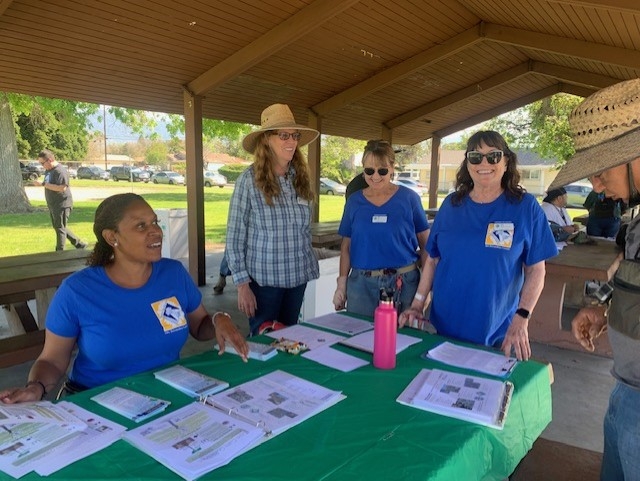
Posts Tagged: ANR
2,000 Climate-Ready Trees Provided to Residents of Low Shade Neighborhoods
To date, over 2,000 climate-ready shade trees and tips on their planting and long-term care have been provided by UC Master Gardeners and over 20 partners to residents of low shade neighborhoods in San Bernardino and Riverside Counties through the “Trees for Tomorrow Start Today” project. Tree species given away are identified from research projects including the joint University of California/United States Forest Service (USFS) study at UC Riverside as well as from other research, local observations, and input from the green industry and academic colleagues.
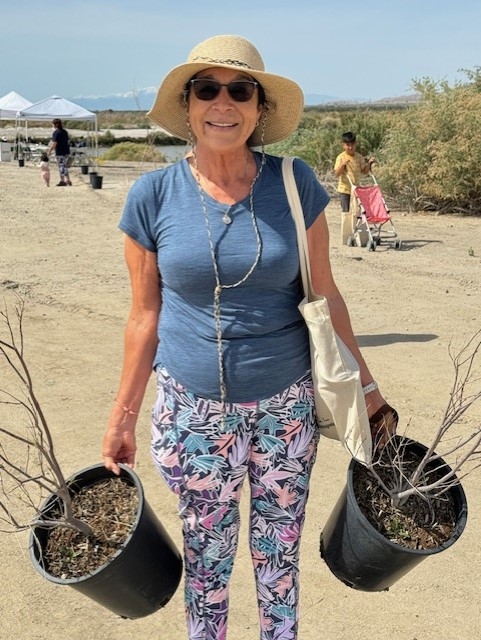
Why is this project so important? 95% of Californians now reside in cities and suburban environments. Resulting urban heat islands created by built environments coupled with impacts of climate change can be mitigated through nature-based solutions. Planting climate-ready shade trees now will help ensure cooler urban areas in the next several decades as trees mature and maximize their urban ecosystem benefits. Fortunately, the shade from a single well-placed tree can decrease surface temperatures of black asphalt and artificial turf by more than 70 degrees F in hot inland and desert cities. Studies show that surrounding air temperatures can also be reduced through the transpiration process.
A major goal of the"Trees for Tomorrow Start Today" project is to enhance tree canopy cover in low shade neighborhoods also plagued with much higher than average levels of air pollution and pulmonary and cardiovascular disease incidence. Events over the past month have occurred in Fontana, San Bernardino, and the Salton Sea.
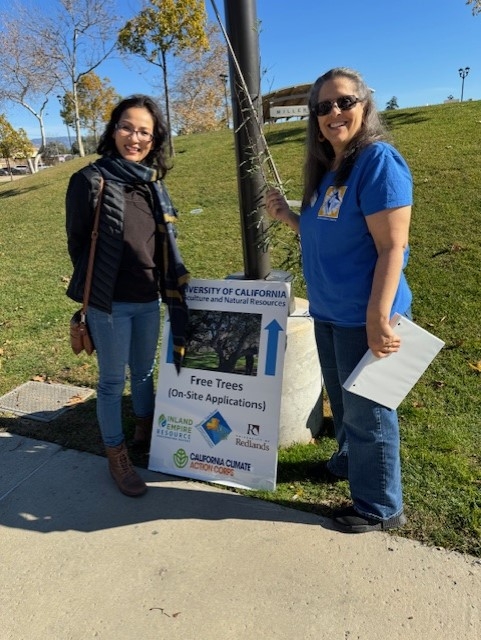
Thank you to all our partners and, especially, our tree recipients, for greening and cooling your yard and neighborhood! 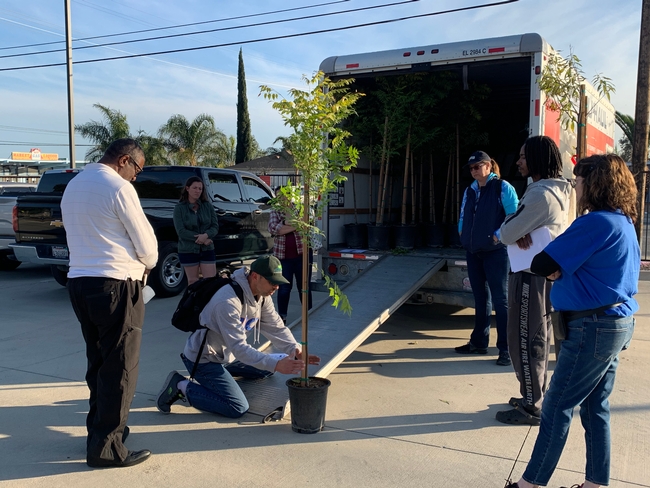
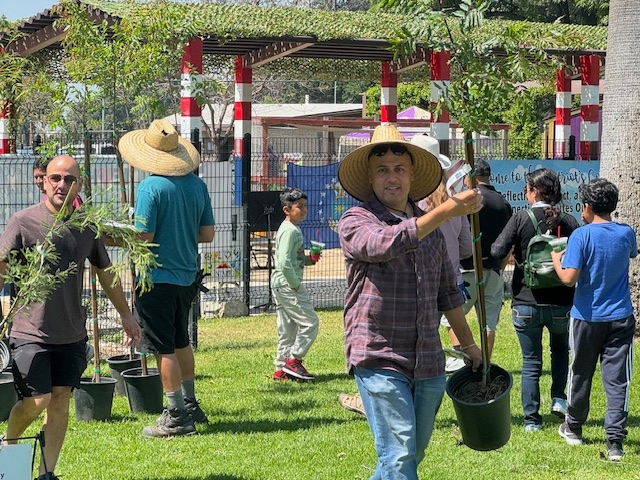
Protect Yourself from Pesticides
If you've used disinfecting wipes to clean surfaces in your home, an herbicide to control weeds in...
2023: These Are a Few of My Favorite Things
There's no fame, fortune or glory in writing a daily (volunteer) Bug Squad blog. It's about the...
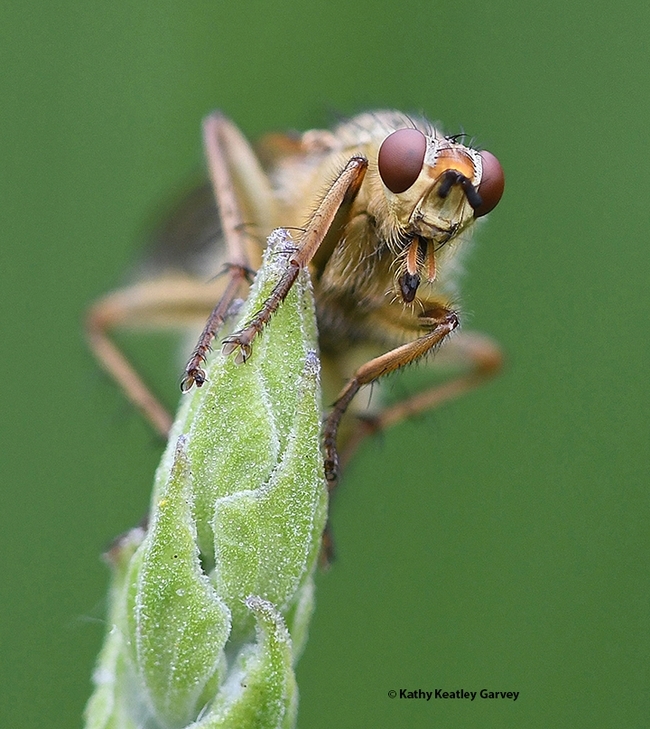
A golden dung fly, Scathophaga stercoraria, peers at the photographer. (Photo by Kathy Keatley Garvey)
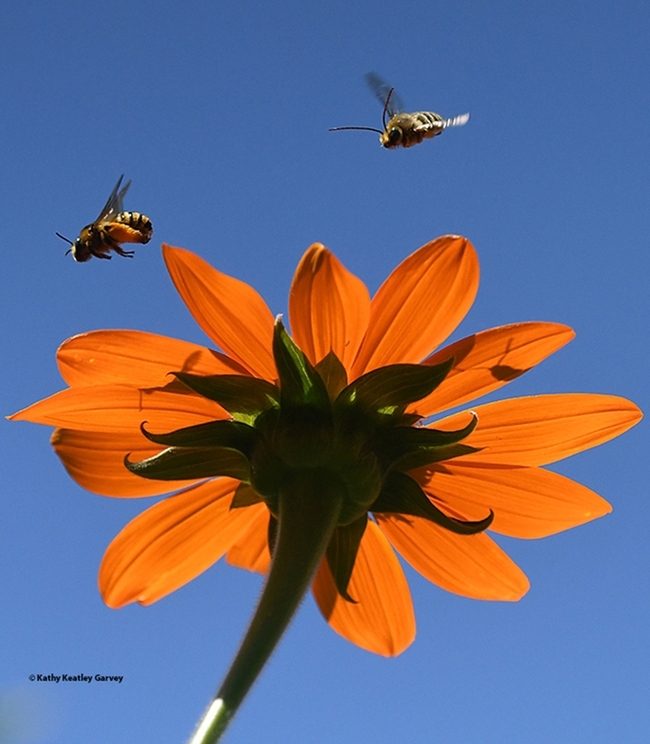
Two native bees, Melissodes agilis, buzz over a Mexican sunflower, Tithonia rotundifola. (Photo by Kathy Keatley Garvey)
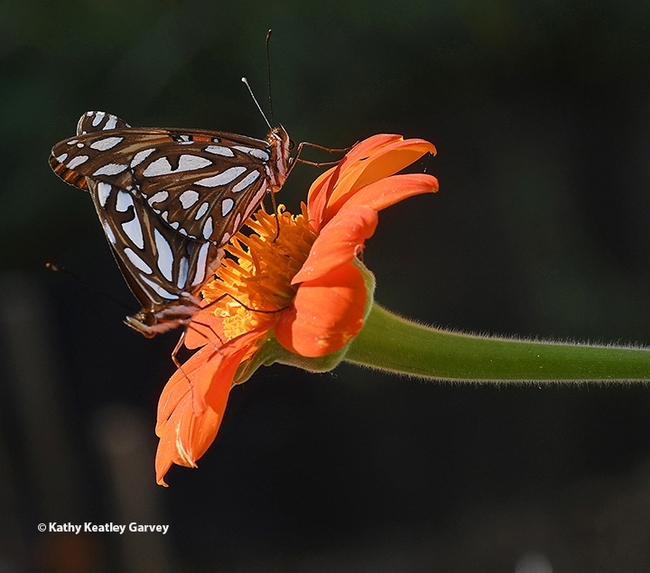
Two Gulf Fritillaries, Agraulis vanillae, keeping busy. (Photo by Kathy Keatley Garvey)
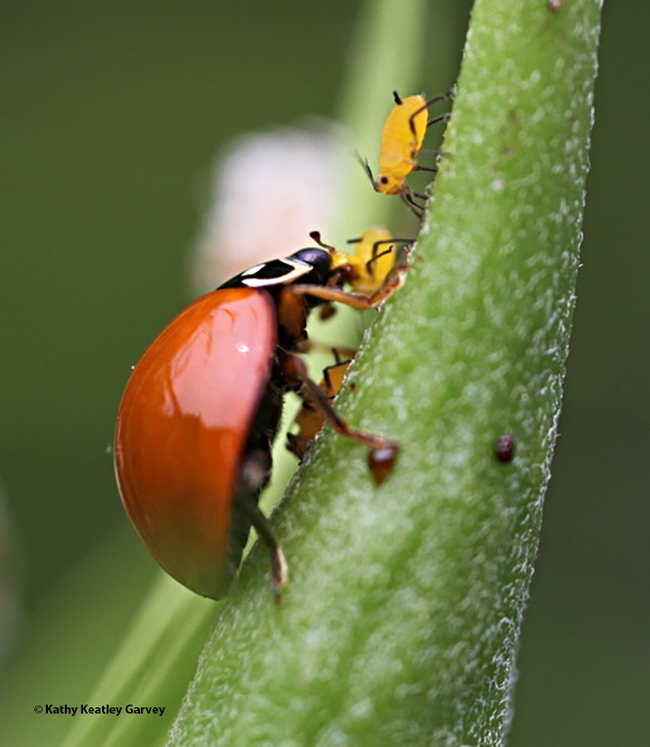
A lady beetle, aka lady bug, devouring aphids. (Photo by Kathy Keatley Garvey)
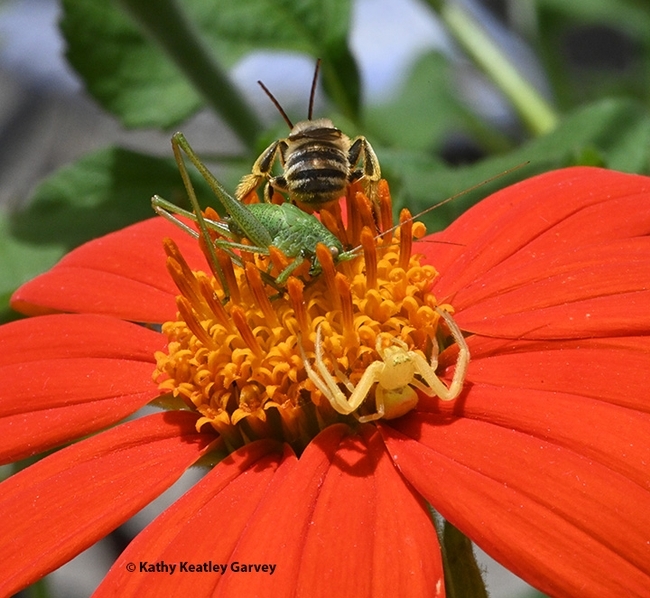
Three in one: a crab spider, katydid and a native bee. (Photo by Kathy Keatley Garvey)
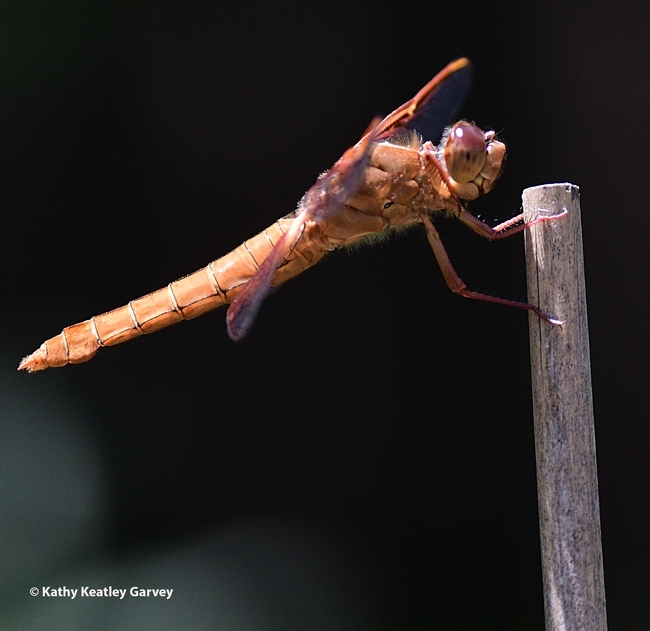
A flameskimmer dragonfly, Libellula saturata, looking or prey. (Photo by Kathy Keatley Garvey)
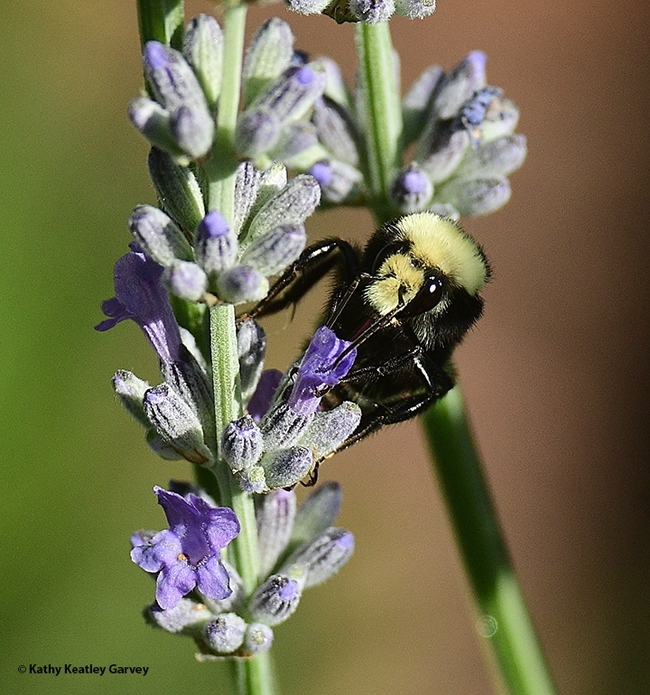
A yellow-faced bumble bee, Bombus vosnesenskii, gathering nectar. (Photo by Kathy Keatley Garvey)
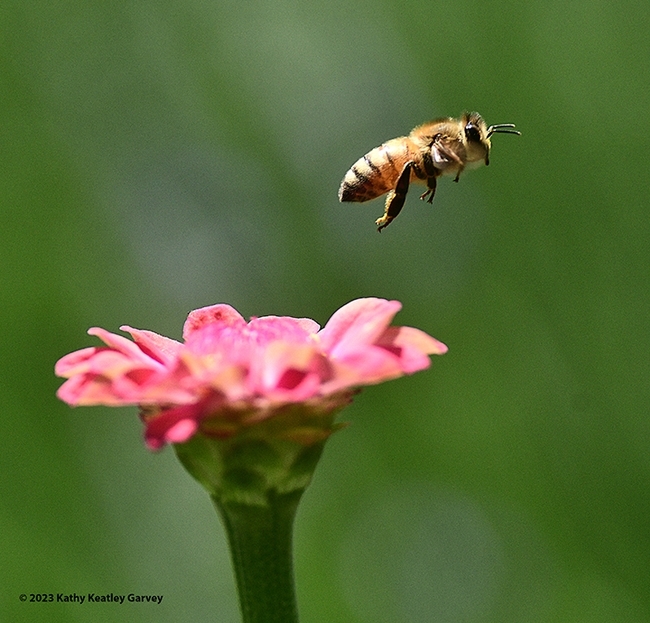
A honey bee, Apis mellifera, in flight over a Mexican sunflower, Tithonia rotundifola. (Photo by Kathy Keatley Garvey)
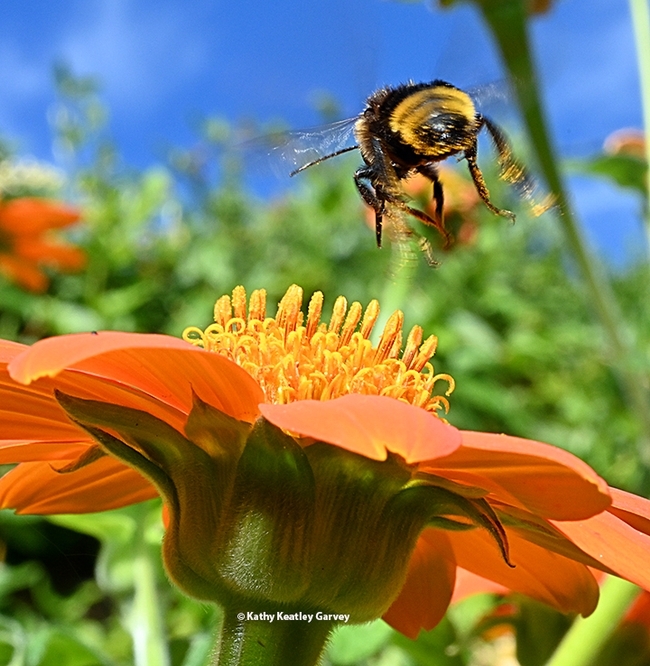
A bumble bee, Bombus californicus, leaving a Mexican sunflower, Tithonia rotundiola. (Photo by Kathy Keatley Garvey)
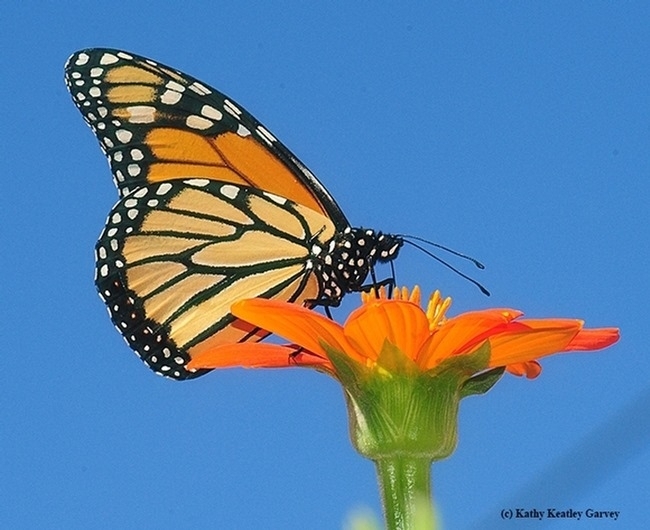
A monarch butterfly, Danaus plexippus, nectaring on Mexican sunflower, Tithonia rotundifola. (Photo by Kathy Keatley Garvey)
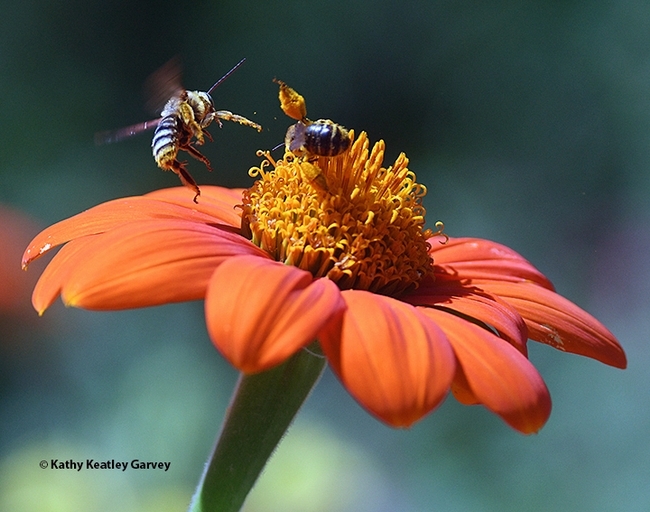
Native bees, Melissodes agilis, clash over territory. (Photo by Kathy Keatley Garvey)
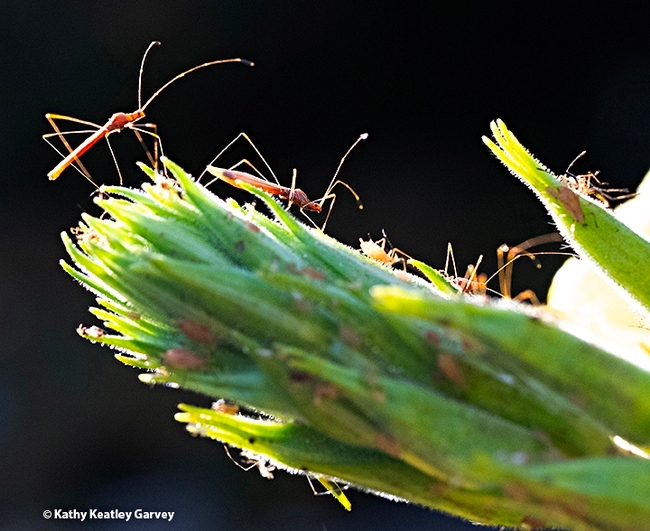
Stilt bugs, family Berytidae, order Hemiptera, infest an evening primrose. (Photo by Kathy Keatley Garvey)
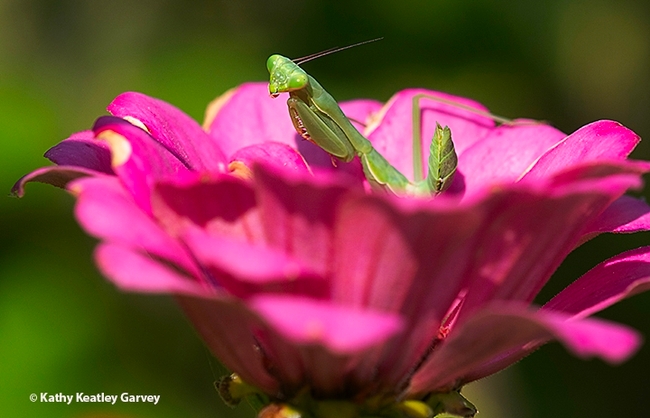
Pretty in pink? A praying mantis, Stagmomantis limbata, sits in a zinnia. (Photo by Kathy Keatley Garvey)
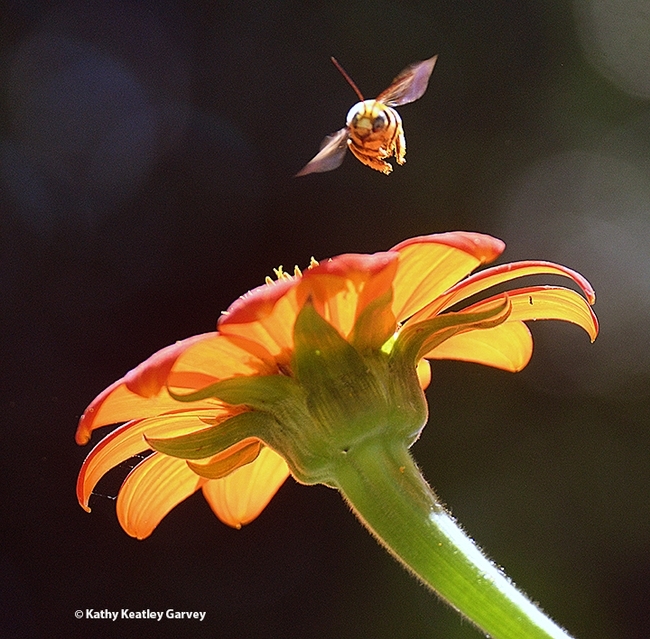
A territorial male native bee, Melissodes agilis, sails over Tithonia rotundifola. (Photo by Kathy Keatley Garvey)
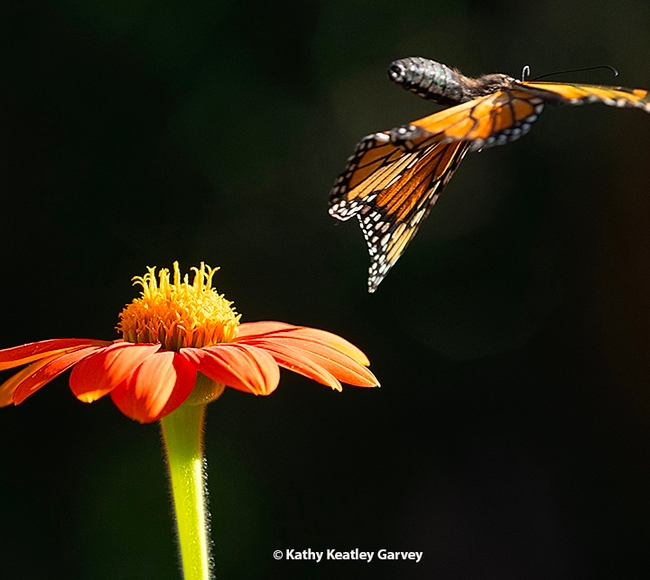
A monarch butterfly, Danaus plexippus, takes flight. (Photo by Kathy Keatley Garvey)
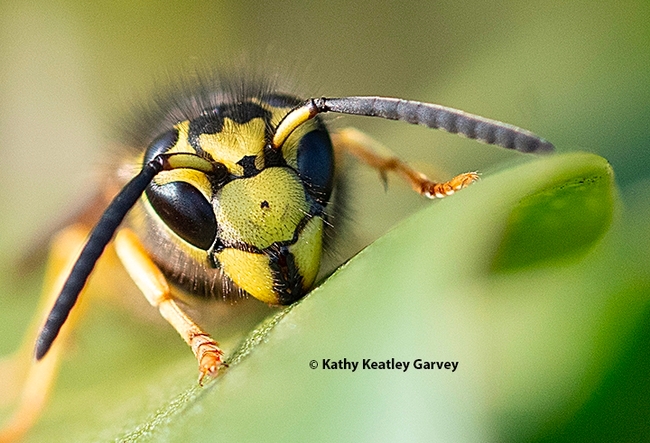
A Western yellowjacket, Vespula pensylvanica, stares at the photographer. (Photo by Kathy Keatley Garvey)
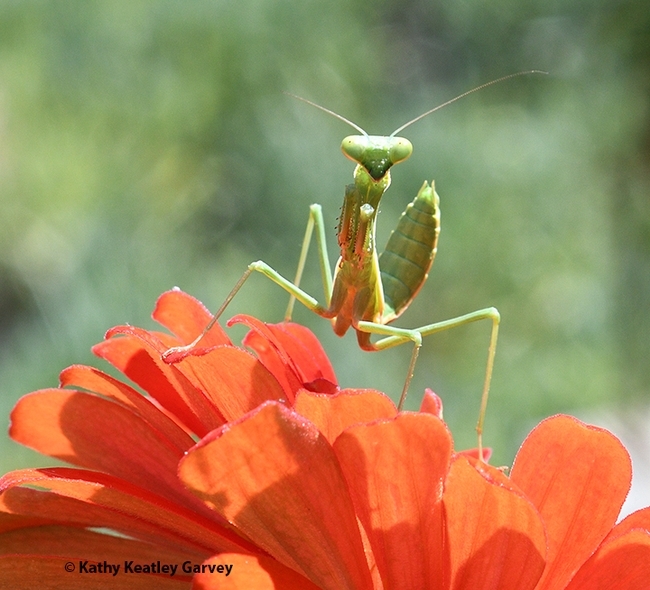
A praying mantis, Stagmomantis limbata, eyes the photographer. (Photo by Kathy Keatley Garvey)
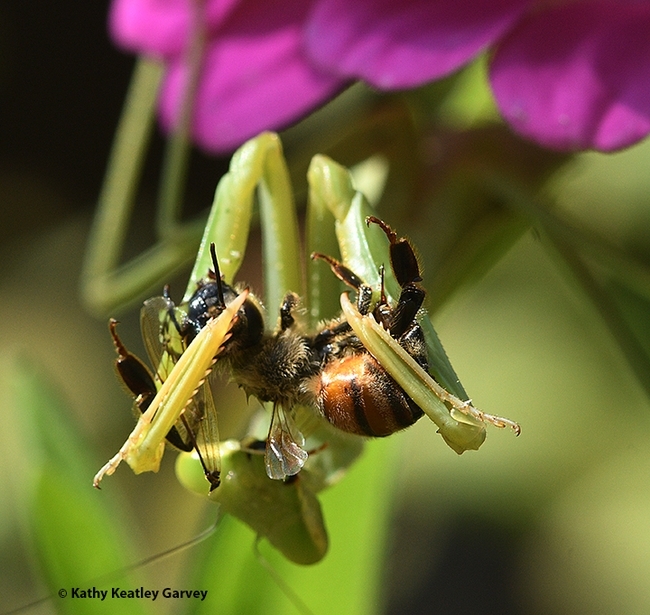
A praying mantis, Stagmomantis limbata, eating a honey bee, Apis mellifera. Everything alive must eat to stay alive. (Photo by Kathy Keatley Garvey)
Fall Colors Explained
Welcome to Fall!
It's my favorite season and likely for many of you, as well. Beyond the holidays and extra time with family and friends, nature radiates its beautiful hues. In addition to lovely foliage, deciduous trees often expose exquisitely shaped and sturdy trunks. And, of course, there is the lovely fall foliage showcased by many species.
Did you ever wonder why trees "turn" color in the fall? The short answer: It's primarily a function of long, cool fall nights and short, sunny days. The longer answer? Chlorophyll is responsible for the basic green color of leaves we see in spring and summer and is a necessary component of photosynthesis, which uses sunlight to manufacture sugar (food) that is stored during the dormant period of the year. Carotenoids produce yellow, orange and even brown pigments in crops such as carrots, squash, bananas and many ornamental plants such as daffodils and poppies. Anthocyanins are red and orange in color and are most linked to lavish displays of brilliant fall foliage. They also give rise to coloring of strawberries, plums and cherries.
Here's the kicker: While chlorophyll and carotenoids are present in leaf cell chloroplasts throughout the entire growing season, during fall chlorophyll begins to break down. Voila! The lovely yellow and orange hues we all look forward to seeing are finally exposed. In addition, red hues (called anthocyanins) are produced in fall. So, in reality foliage doesn't "turn" orange or red at all.
Interestingly, the actual timing of color change varies across species and appears to be genetically inherited. The same species will exhibit a similar color scheme in cool temperatures in higher elevations at nearly the same time as it does in warmer lower elevation climates.
The intensity of color can vary quite a bit however. Where do temperatures enter the picture? Both the amount of color and the overall intensity of fall color is very linked to weather conditions that occur prior to and during the actual time the chlorophyll in leaves winds down. The most brilliant displays occur after several warm, sunny days and cool, crisp (above freezing) nights. This is because although lots of sugars are made in leaves during sunny daytime hours, the corresponding cool nights prevent the sugars from moving out. The amount of soil moisture also helps ensure that from year to year fall colors vary even in the same trees. So, either a late spring or a prolonged drought can both delay the display of fall color by a few days or even a few weeks.
What's the recipe for the most brilliant fall display? Most likely a warm, moist spring followed by a warm summer and sunny fall with cool autumn nights. Although fall color is not nearly as spectacular in lower elevations of Southern California compared to other colder areas of the nation, the liquidambar or American sweet gum (Liquidambar styraciflua) offers some pretty impressive fall color and an impressive 300 to 400-year life span. (Did you know that liquidambar got its name because it at one time was a sought-after chewing gum for Native Americans?)
Two “climate-ready” tree species with lovely fall foliage that grow in both the west portion of the county and the desert are the ‘Keith Davey' Pistache, a large street and park tree sporting crimson to scarlet colored foliage and its relative, the ‘Red Push' Pistache, a hybrid between P. atlántica x P. integerrima) which has lovely red foliage as it emerges in Spring as well as Fall. Others include the Raywood Ash (Fraxinus oxycarpa 'Raywood') sporting a reddish-purple hue in the fall, and the ‘Sunburst' Locust (Gleditsia triacanthos var. inermis 'Sunburst') which offers a vivid display of fall color. Unfortunately, it is susceptible to the Invasive Shot-Hole Borer. If you have one of these lovely trees already, take good care of it to help it stand up to this aggressive pest!
Happy Fall! Enjoy the cooler weather, family and friends, and lovely trees!
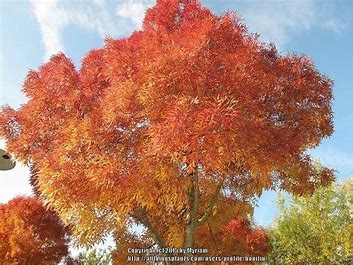
Raywood Ash source national gardening association
Valliere brings expertise in restoration ecology
It all started with pumpkin seeds Justin Valliere has been hired to expand the Department of Plant...

